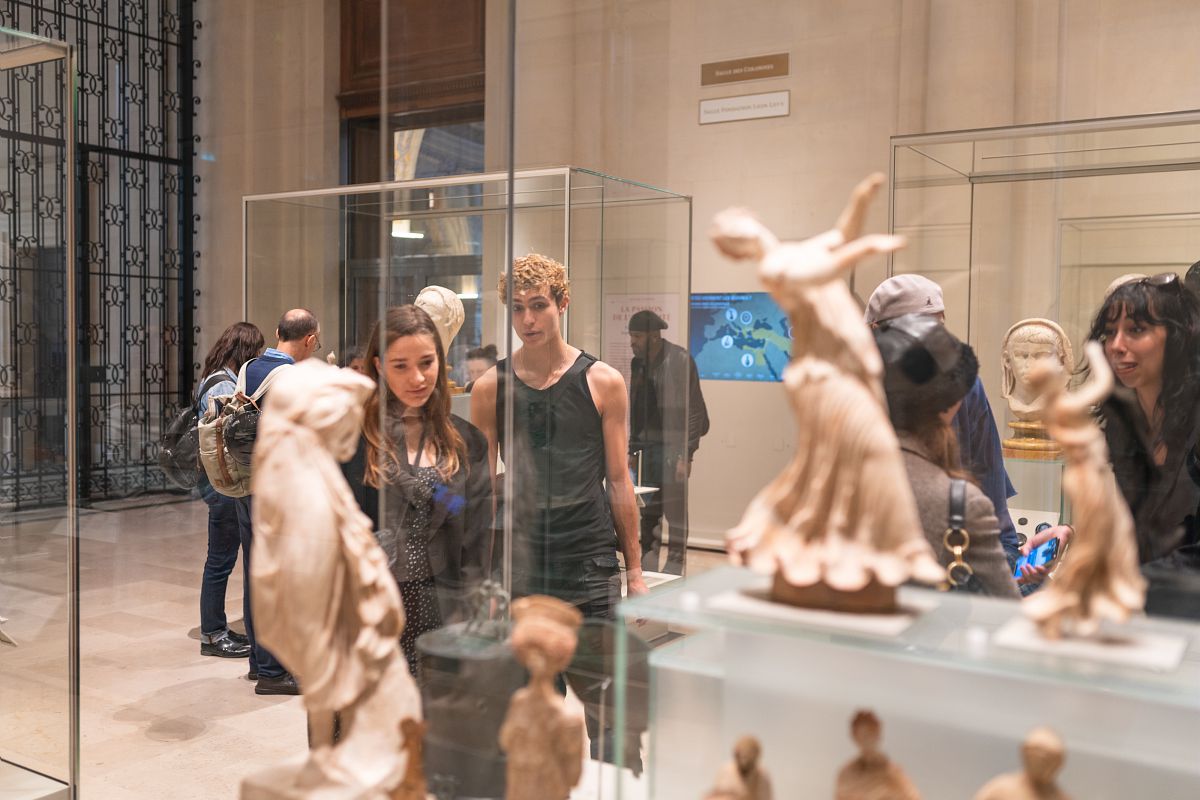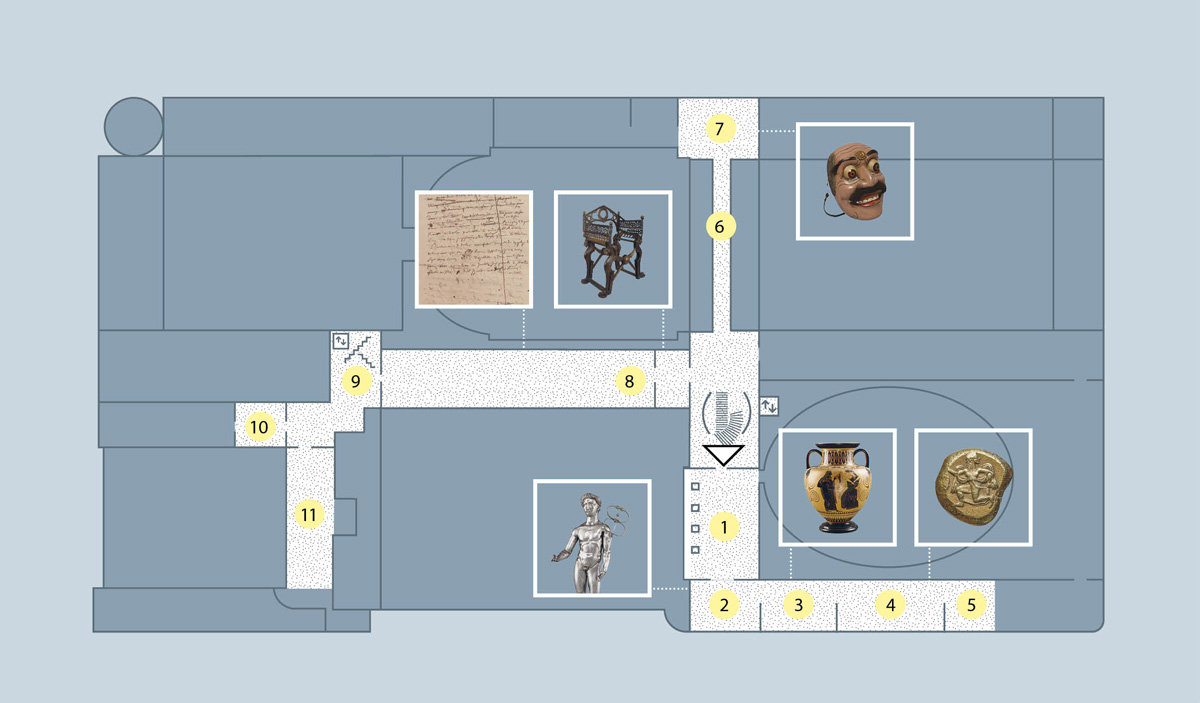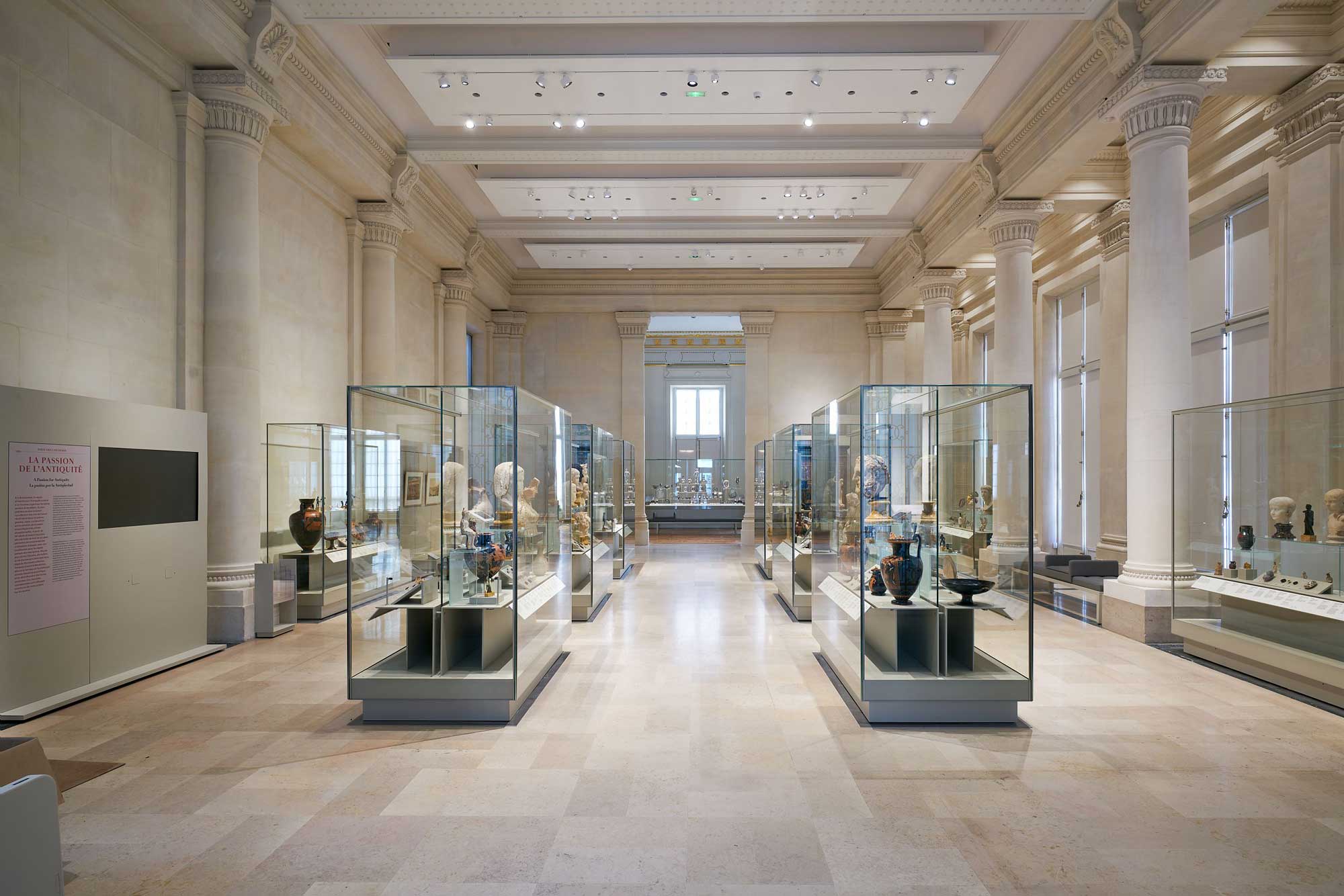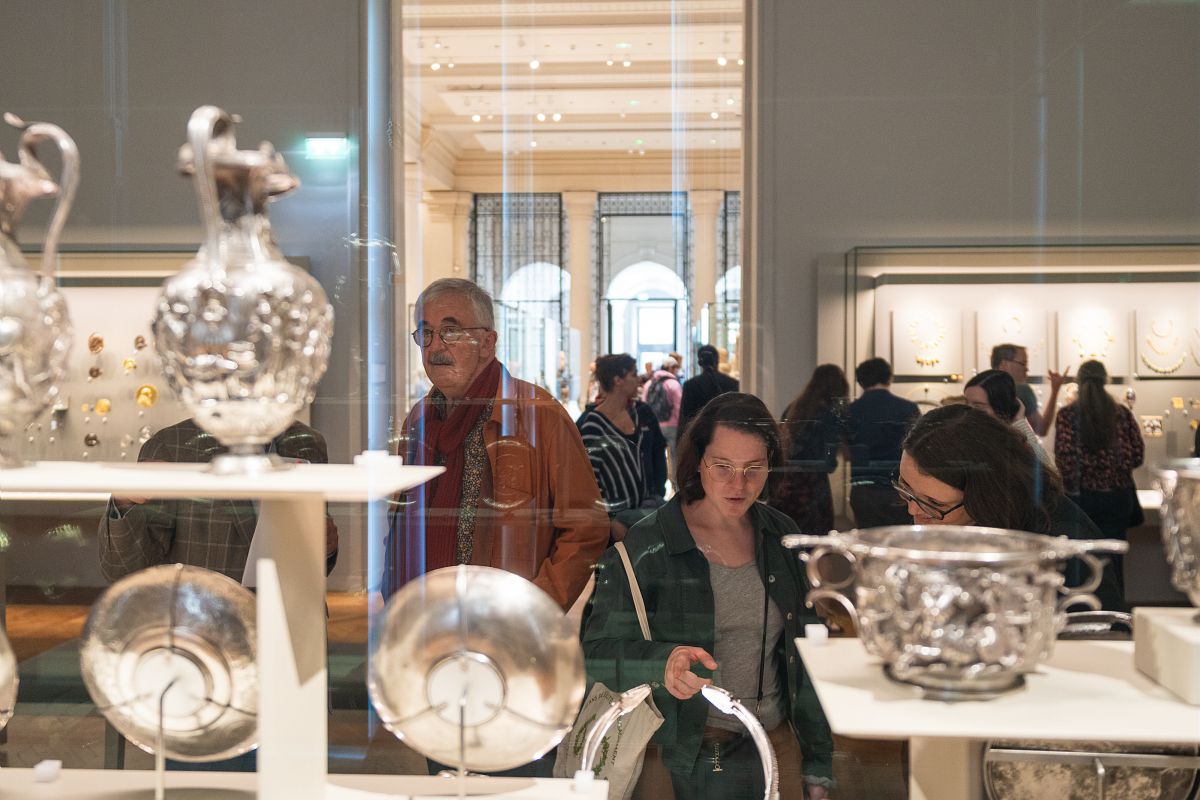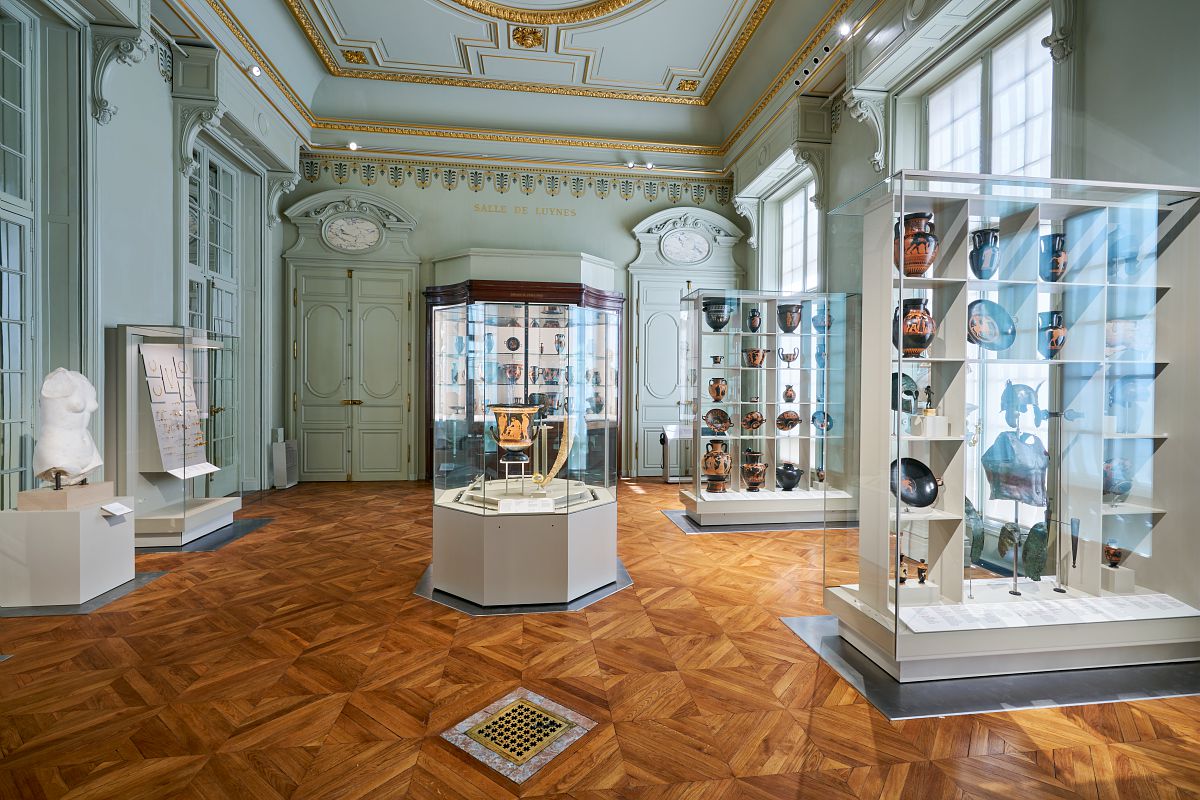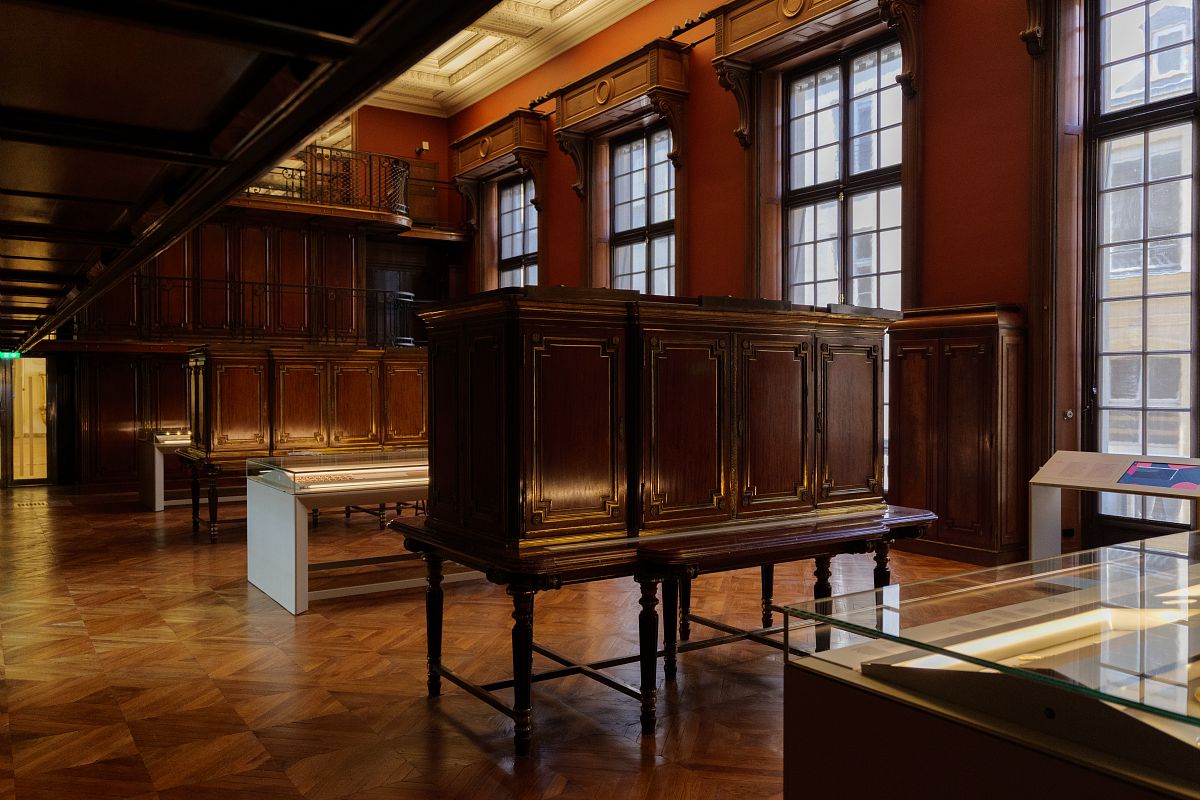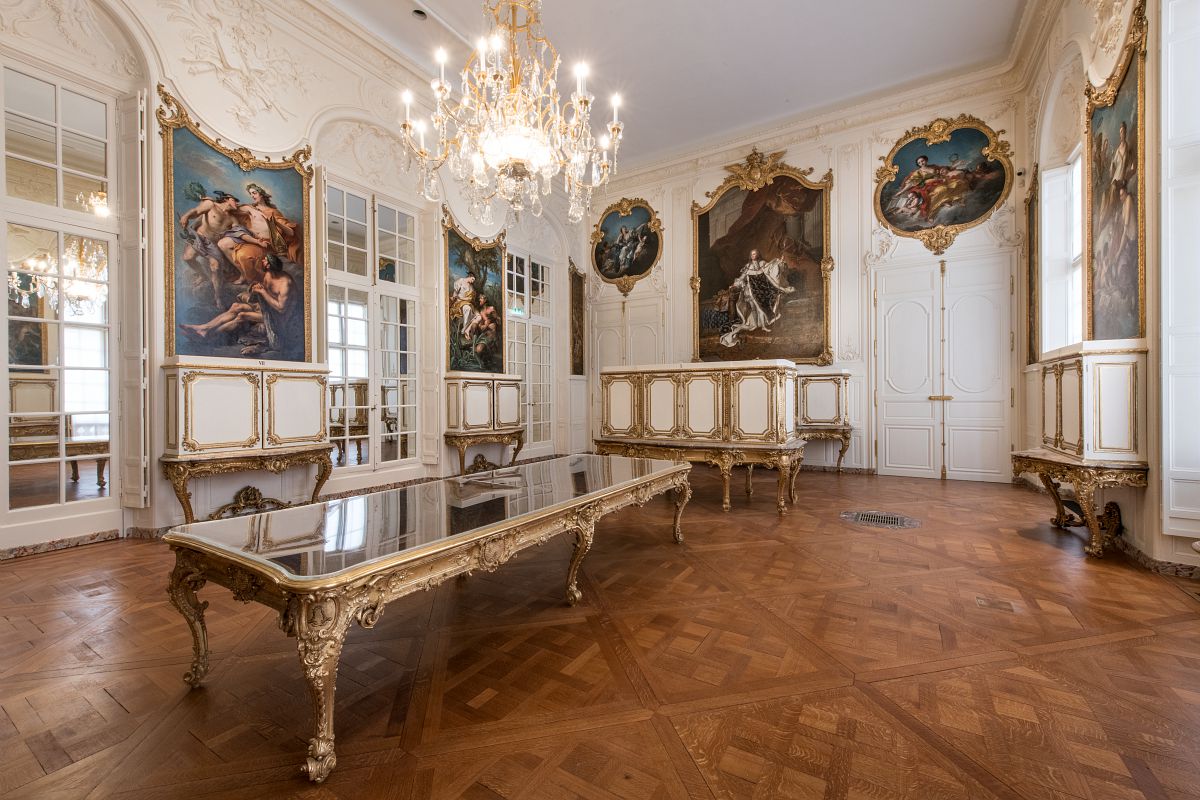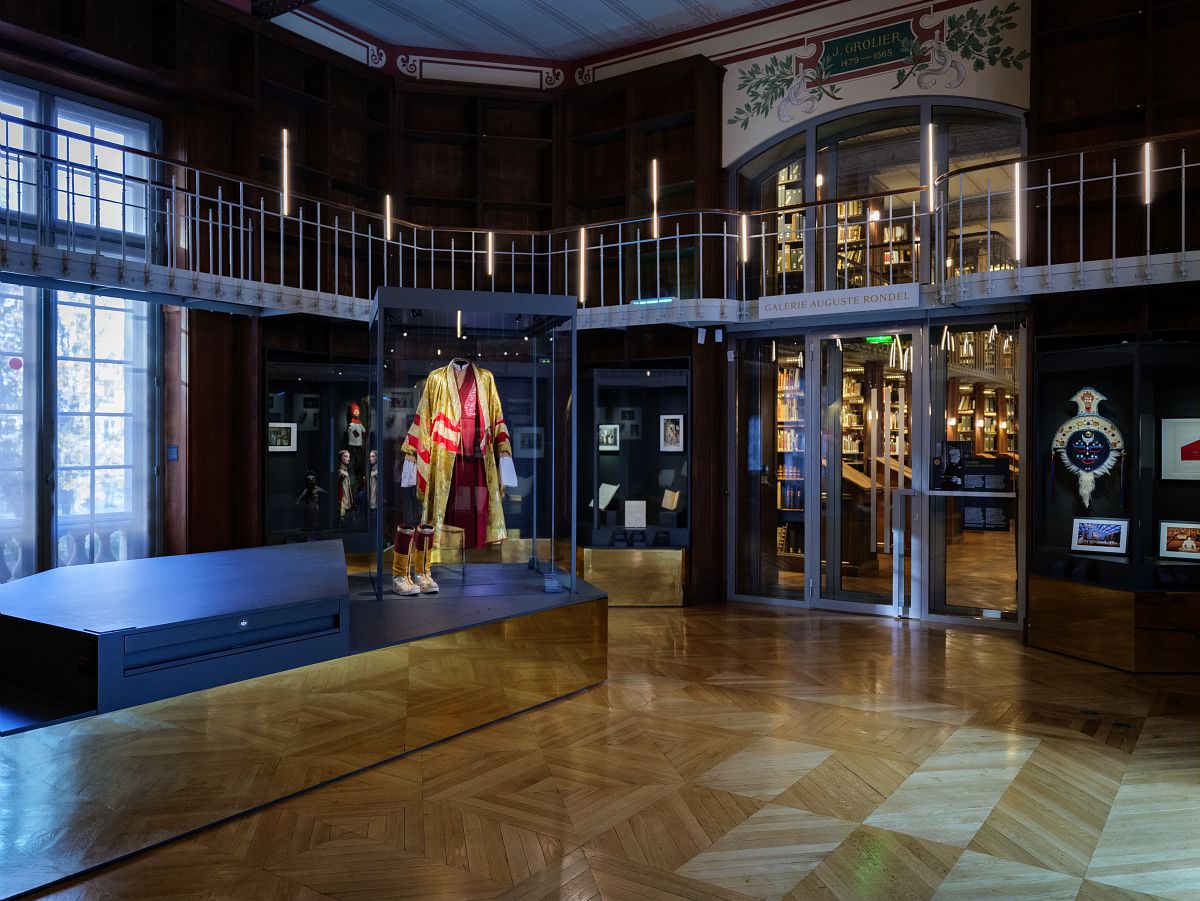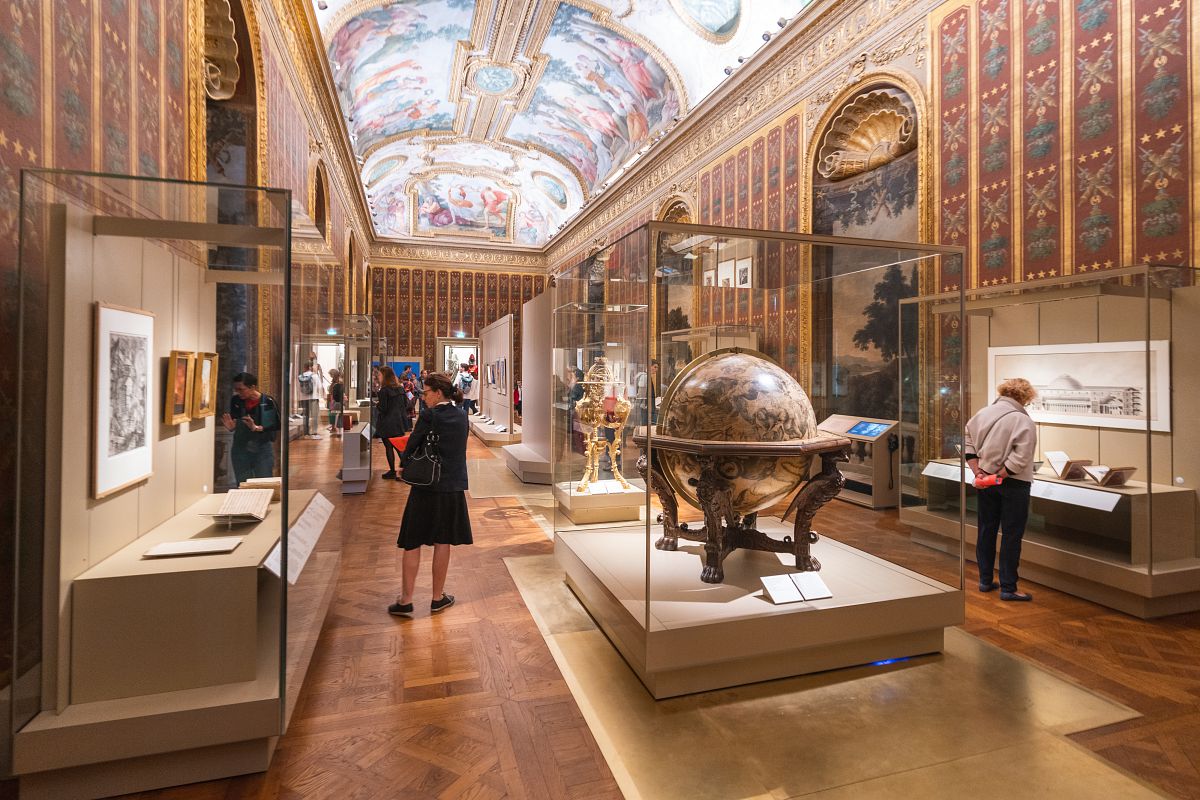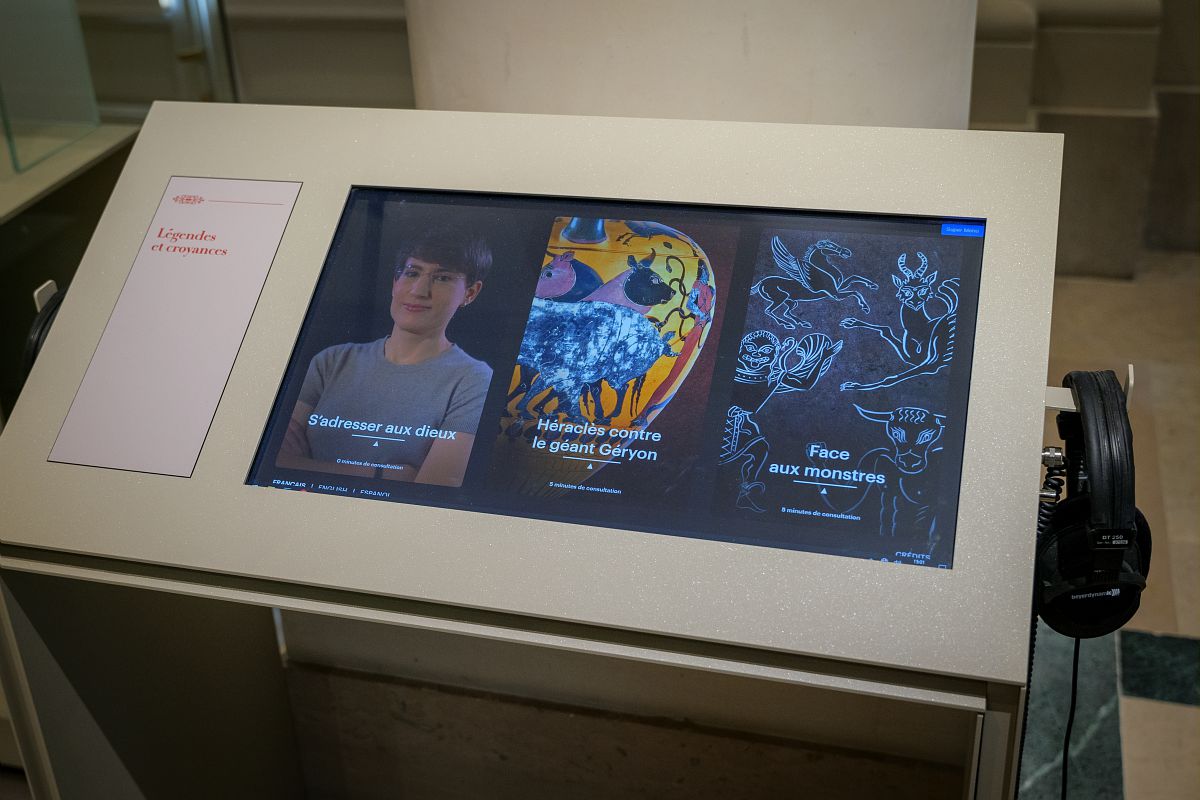The BnF Museum’s itinerary
You can admire almost 900 items selected from the BnF’s collections: Archaeological artefacts, medals, manuscripts, prints, drawings, geographical maps, globes, musical scores, rare books, and costumes. The most fragile works are exhibited in the Mazarin Gallery and the Rotunda, with three rotations a year. Museography is by Guicciardini & Magni architetti.
This page will guide you through the Bibliothèque nationale de France Museum on the Richelieu site.
Museum map
The Museum is located on the 1st floor, accessible by lift.
- Column Room
- Cabinet of Treasures
- De Luynes Room
- Barthélemy Room
- Louis XV Salon
- Glass Gallery
- Rotunda
- Mazarin Gallery
- Roux-Spitz Hall
- Mazarin Chamber
- Conference | Events Room
The Column Room – Leon Levy Foundation Room
The chronological itinerary begins in the Column Room. The extensive collections of antiquities amassed in the Cabinet du Roi, then acquired to enrich what became the national collection during the Revolution or donated to the Library by enlightened collectors, are exhibited there. The BnF’s collections have always been compiled with a view to understanding history and ancient civilisations: those of the Roman and Greek worlds along with other cultures.
The deciphering of the Phoenician and Palmyrene alphabets, French scientific archaeology’s first discoveries, took place within these walls.
And it is this spirit that has guided the way the collections are presented in this room. The Greco-Roman pantheon’s gods and heroes through vases, statuettes and coins, magical practices with jewellery and amulets, everyday objects, body care and public activities such as sports competitions and the theatre are among the themes addressed in this area.
The Cabinet of Treasures – Sisley-d’Ornano Room
Mainly metallic collections are presented in this room, including coins, jewellery, engraved stones and ceremonial tableware made of precious metals.
These collections owe their origins to the Privy Purse in the Middle Ages, the king’s store of wealth and collection alike.
The central display case contains one of the collections’ showpieces, the Berthouville silver treasure, one of the few examples of ancient temple treasure that have come down to us.
The other display cases exhibit large silver and gold dishes that demonstrate the opulence and sophistication of courts in late Antiquity and the Sassanid era, along with Celtic, Greek and Roman jewellery, masterpieces of medal art from the Renaissance onwards, and a selection of remarkable stones engraved in cameo and intaglio.
The de Luynes Room
Honoré d’Albert, Duke of Luynes (1802-1867), who presented the Cabinet of Medals with what was then one of the largest collections of antiquities in France (1000 objects, including 86 figured vases, and 7,000 coins), was a great aristocrat, a wealthy patron and a learned scholar with a passion for ancient archaeology and numismatics, with close connections to the scientific circles of his day.
The collection is organised in the display cases in order to illustrate several different themes: war in Antiquity, the world of Dionysus / Bacchus, god of wine and drunkenness, ancient jewellery and coins.
A few works, most of them unique, were specially selected by the Duke due to their artistic quality: the Metapontum krater, the strikingly realistic Hellenistic bronze head from Samnium, the Gallic gold bracelet from Aurillac, the sculpted ivory hunting horn from the Portes Charterhouse and the sword of Boabdil, the last ruler of the Emirate of Granada in the 15th century.
The Barthélemy Room
The former reading room of the Department of Coins, Medals and Antiques, the Barthélemy Room is named after Abbé Barthélemy (1753-1795), who was the keeper of the Cabinet du Roi.
It provides an overview of the Cabinet des Médailles’ creation and its coin and medal collections through emblematic items amassed by the figures who shaped its history – sovereigns, curators and collectors. They include gold medals struck during Louis XIV’s reign, commissioned by the Sun King himself, the Eucratideion (the ancient world’s largest gold coin) and an example of the first Louis IX gold ecu. All of them bear witness to a passion for collection and the excellence of the research carried out in the Cabinet, which have made it a world reference with regard to numismatics. Such artists and writers as Eugène Delacroix and André Breton, who came to look for sources of inspiration in the collections, are also evoked.
The Louis XV Salon
Fitted out in the mid-18th century to house the royal collection of coins and engraved stones, the Louis XV Salon has been open to scholars and the simply curious ever since its creation. Hence, it can be considered the oldest museum in Paris. Its 18th century decoration and furniture are unique, making this area a truly remarkable period room from the Age of Enlightenment.
The Rotunda
The Rotunda, which was designed by Henri Labrouste in the late 19th century, covers 100 m²; a large glass door provides visitors with a view of the Auguste Rondel Gallery, a magnificent storeroom also designed by Labrouste, which houses most of the collection amassed by Auguste Rondel, an enthusiastic benefactor at the origin of the Department of Performing Arts’ collections.
The Rotunda forms part of the museum itinerary, providing more targeted presentations that reveal part of the Library’s collections.
Retrouver les sélections, présentes et passées, exposées dans la rotonde
Découvrez le portrait de Sarah Bernhardt dans la Rotonde
The Mazarin Gallery
The Mazarin Gallery, a real “Gallery of Treasures” drawn from the BnF’s encyclopaedic collections, is one of the Museum’s highlights. One of the few surviving examples of Baroque galleries in France, the Gallery was designed by François Mansart between 1644 and 1646 at the request of Cardinal Mazarin, to house his rich collections of paintings and sculptures. The new Museum’s extension into this Gallery and its vestibule marks the continuity of this heritage history on one and the same site for over 350 years.
Find out more about the Mazarin Gallery
Guided Tours
Individuals and groups are welcome to join guided tours on various topics:
- History and architecture of the BnF
- Temporary exhibitions
- The BnF Museum
More on guided Tours – Individual
Book your tour : visites@bnf.fr or +33 (0)1 53 79 49 49 (Monday through Friday, 9:00 a.m. to 4:00 p.m)
Digital Mediation
Manipulate a 3D globe, discover the history of a piece of jewellery commissioned by a queen, see the inside of a medieval copyist’s or ancient potter’s workshop… There are 18 digital mediation terminals along the museum itinerary, inviting visitors to discover the works on display differently.
Practical information
Opening times
Tuesday (late-night opening): 10 a.m. – 8 p.m.
Wednesday to Sunday: 10 a.m. – 6 p.m.
Closed on Mondays and select bank holidays*
The Museum is open on 8 May, Ascension Thursday, and 1 and 11 November.
* The Museum is closed on 1 January, Easter Monday, 1 May, Whit Monday, 14 July, 15 August and 25 December
Please note: due to the fragility of certain artworks, some pieces on display in the Mazarin Gallery and Rotunda are rotated every four months, showcasing the breadth of the BnF’s collections. These spaces are closed to the public while the pieces are rotated.
Mazarin Gallery closing dates: From Monday 12 to Thursday 22 january 2026 included
Rotunda closing dates: From Monday 6 to Friday 10 October 2025 included and from Monday 2 to Friday 6 February 2026 included
Access
Site Richelieu
5, rue Vivienne
75002 PARIS
Group activities
Reservation obligatory at visites@bnf.fr or on 01 53 79 49 49 (from Monday to Saturday, 9 am to 5 pm)
Rates
During the Mazarin Gallery’s closure period, individual tickets are only available at ticket offices and Museum admission rates are lowered to 7 € (full rate), 5 € (reduced rate), 10 € (full rate coupled with an exhibition) and 7 € (reduced rate coupled with an exhibition).
Guided tours of the BnF’s Museum – Reservation

